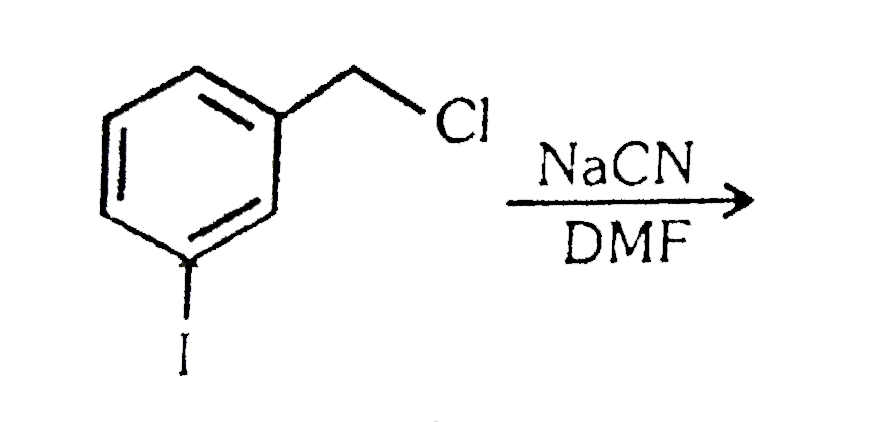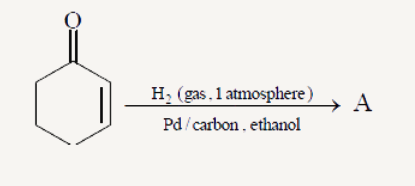Write the name and draw the structure of the product which is formed by the reaction of formaldehyde and ammonia.
To determine the product formed by the reaction of formaldehyde and ammonia, we can follow these steps:
Step 1: Identify the Reactants
- The reactants are formaldehyde (HCHO) and ammonia (NH₃).
- Formaldehyde has the structure:
H2C=O
Step 2: Understand the Reaction Mechanism
- Ammonia acts as a nucleophile due to the lone pair of electrons on the nitrogen atom.
- It attacks the carbon atom of the carbonyl group (C=O) in formaldehyde.
Step 3: Nucleophilic Attack
- When ammonia attacks the carbonyl carbon, the double bond between carbon and oxygen breaks, leading to the formation of a tetrahedral intermediate.
- This results in the following structure:
H2C(OH)(NH2)
- Here, the nitrogen atom has three hydrogen atoms and a positive charge temporarily due to the donation of its lone pair.
Step 4: Proton Transfer
- A proton (H⁺) is transferred from the nitrogen to the oxygen to neutralize the charges.
- This results in the formation of an alcohol and an amine.
Step 5: Final Product Structure
- The final product after the proton transfer is:
H2C(OH)(NH2)
- This compound can be represented as:
HO-CH2−NH2
Step 6: Naming the Product
- The compound has one carbon atom, one hydroxyl group (–OH), and one amino group (–NH₂).
- The IUPAC name for this compound is aminomethanol or hydroxymethylamine.
Final Answer
- The product formed by the reaction of formaldehyde and ammonia is aminomethanol (or hydroxymethylamine).
- The structure is:
HO-CH2−NH2
---
- The reactants are formaldehyde (HCHO) and ammonia (NH₃).
- Formaldehyde has the structure:
H2C=O
- Ammonia acts as a nucleophile due to the lone pair of electrons on the nitrogen atom.
- It attacks the carbon atom of the carbonyl group (C=O) in formaldehyde.
- When ammonia attacks the carbonyl carbon, the double bond between carbon and oxygen breaks, leading to the formation of a tetrahedral intermediate.
- This results in the following structure:
H2C(OH)(NH2)
- Here, the nitrogen atom has three hydrogen atoms and a positive charge temporarily due to the donation of its lone pair.
- A proton (H⁺) is transferred from the nitrogen to the oxygen to neutralize the charges.
- This results in the formation of an alcohol and an amine.
- The final product after the proton transfer is:
H2C(OH)(NH2)
- This compound can be represented as:
HO-CH2−NH2
- The compound has one carbon atom, one hydroxyl group (–OH), and one amino group (–NH₂).
- The IUPAC name for this compound is aminomethanol or hydroxymethylamine.
- The product formed by the reaction of formaldehyde and ammonia is aminomethanol (or hydroxymethylamine).
- The structure is:
HO-CH2−NH2
Topper's Solved these Questions
- ALDEHYDES, KETONES AND CARBOXYLIC ACIDSBook:ICSEChapter:ALDEHYDES, KETONES AND CARBOXYLIC ACIDSExercise:EXERCISE (PART-II DESCRIPTIVE QUESTIONS) ( SHORT QUESTIONS)
Explore 581 Videos
- ALDEHYDES, KETONES AND CARBOXYLIC ACIDSBook:ICSEChapter:ALDEHYDES, KETONES AND CARBOXYLIC ACIDSExercise:ISC EXAMINATION QUESTIONS (PART-I OBJECTIVE QUESTIONS) (FILL IN THE BLANKS)
Explore 27 Videos
- ALDEHYDES, KETONES AND CARBOXYLIC ACIDSBook:ICSEChapter:ALDEHYDES, KETONES AND CARBOXYLIC ACIDSExercise:EXERCISE (PART-I OBJECTIVE QUESTIONS)
Explore 303 Videos
- ALCOHOLS, PHENOLS AND ETHERS Book:ICSEChapter:ALCOHOLS, PHENOLS AND ETHERS Exercise:ISC EXAMINATION QUESTIONS
Explore 25 Videos
- APPENDIX II ( TYPICAL CONVERSIONS)Book:ICSEChapter:APPENDIX II ( TYPICAL CONVERSIONS)Exercise:AROMATIC CONVERSIONS
Explore 98 Videos
Similar Questions
Knowledge Check
The structure of the product formed in the reaction given below is :
 A
A B
B C
C D
D
Write the structure of the products formed in the following SE reactions :
_E01_259_Q01.png)
View SolutionThe structure of the major product formed in the following reaction is:

View SolutionPredict the product of reaction of
(i) formaldehyde with ammonia.
View SolutionPredict the product of reaction of
(i) formaldehyde with ammonia.
View SolutionPredict the product of reaction of
(i) formaldehyde with ammonia.
View SolutionWrite the structures of the main products of the following reactions :

View SolutionWrite the structures of the main products of the following reactions :

View Solution



